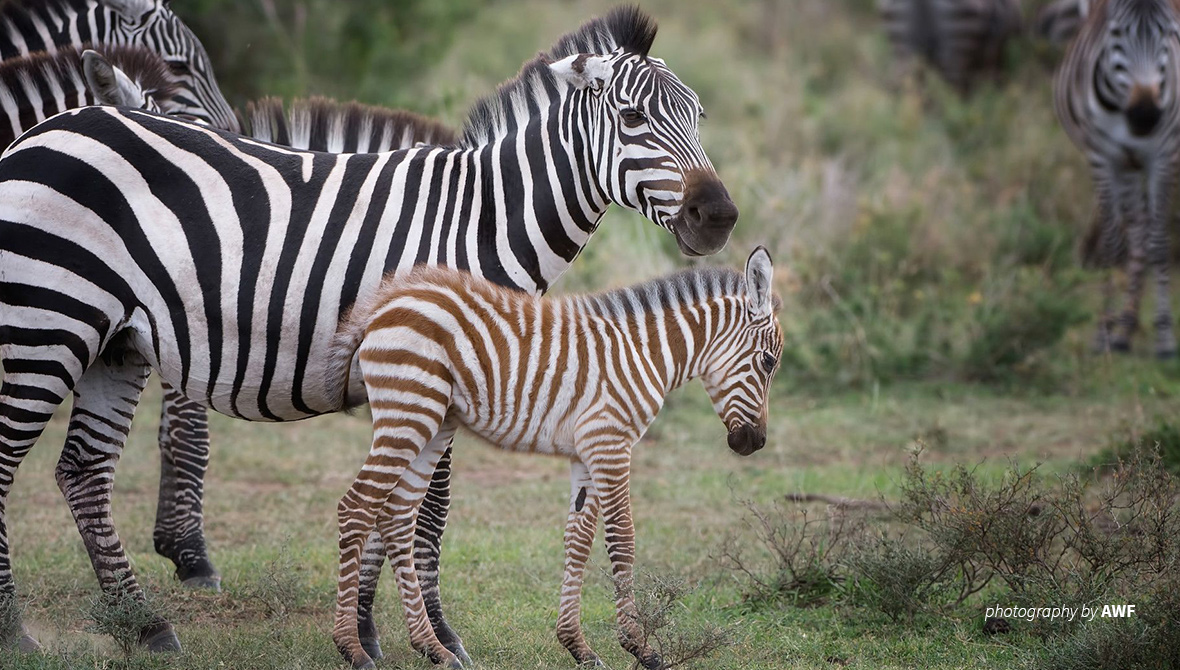Zebra stripes are on the line

Celebrate International Day of Zebra by learning more about the savanna mammal's distinctive pattern
Why the zebra has its stripes is a question biologists have been puzzling over more than a century now. Many theories have been proposed for the purpose of their iconic black and white stripes: camouflage, predator confusion, social recognition, thermoregulation. The most promising theory though is that of protection from biting flies. Experiments placed zebras and uniformly colored horses in similar enclosures, and though the flies circled and touched at similar rates, they landed on the horses far more often. When the horses were placed in striped coats, the flies landed less often. Despite living in areas of high fly activity zebras are not commonly targeted by these species, allowing them to avoid injury and diseases spread by these insects.
Zebras are known for their stripes. The pattern develops in the eighth month of embryonic development, they’re born with brown streaks that darken to black with age. Stripes are the unique identifier that humans and zebras use to distinguish between individual zebras, no two the same. It’s the pattern of stripes, vocalization, and scent that a baby zebra imprints on and uses to recognize their mother.
Zebras coats gain their color from the transfer of melanin from skin cells — the black stripes have melanin, whereas the white fur has none. But these stripes are not the certainty they once were.
In recent years, scientists have noticed more plains zebras with odd patterns on their coats, the most recent being a spotted foal in Kenya’s Maasai Mara National Park. The foal, named Tira after the Maasai guide who first spotted it, has a dark coat and white polka dots instead of the zebra’s trademark stripes.
What are plains zebras?
Plains zebras are one of three species of zebras, along with mountain zebras and Grevy’s zebras. Plains zebras are the most widespread of the three, appearing between the eastern African grasslands and southern African woodlands. They also have the widest stripes, with coats more thoroughly covered in the pattern the further north in their range they are.
Speaking of the foal Tira, photographer Frank Liu told National Geographic, “At first glance, he looked like a different species altogether.”
Researchers from the University of California, Los Angeles, led by biologist Brenda Larison, conducted DNA tests on 140 plains zebras, including seven with odd coat patterns, from nine locations across the plains zebra’s range in Africa.
The study showed that the smaller, more isolated populations of zebras had lower genetic diversity, as would be expected. It also revealed that these isolated groups were more likely to produce abnormally marked zebras, suggesting that their low genetic diversity causes these genetic mutations. A significant factor leading to this lower genetic diversity is habitat fragmentation and degradation.
Habitat degradation is shrinking the social circle of the plains zebra. Unable to consort and mate with those further away from them genetically, plains zebras instead resort to inbreeding, at the cost of their genetic and physical health. Furthermore, these separated populations are becoming distinct from one another, running the risk of becoming too genetically dissimilar and not being able to reintegrate.
Larrison’s research results, published in the journal Molecular Ecology, point to the changing coat patterns as a visual warning about the future of the plains zebra and the dangers of habitat fragmentation. For one thing, the odd markings could make the zebras more visible to predators. “Individuals with aberrant patterns are rare, most often observed as juveniles or in areas with little or no predation, suggesting that they are selected against,” the authors wrote.
Although plains zebras are the least threatened of the zebra species, categorized as near threatened, their population has seen a 25 percent decline since 2002.
Philip Muruthi, AWF’s vice president for species conservation and science, says that the study is a reminder to monitor other African species that might not currently seem in dire straits.
AWF works to safeguard wildlife, including plains zebras, by protecting designated corridors that link protected areas, allowing wildlife to follow rains and migrate to their feeding grounds. By working with communities to establish community conservancies or develop land usage plans we can ensure ample room is available for wildlife, while the communities have space themselves to do what they need.
Rebecca Wesloh contributed to this article.
> Learn more about AWF's work in conserving wildlife habitat